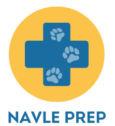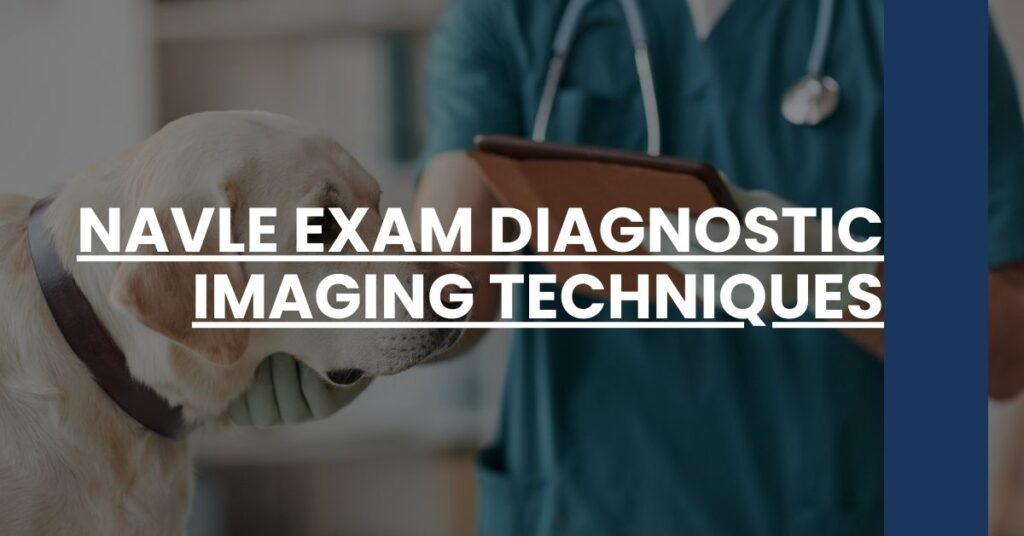Master the NAVLE exam diagnostic imaging techniques crucial for your veterinary career.
- Preparation is Key: Equip yourself with the knowledge to interpret various imaging modalities.
- Technological Proficiency: Understand the intricacies of advanced diagnostic tools.
- Practical Application: Translate imaging theory into real-world veterinary practice.
Excel in interpreting diagnostic imaging for the NAVLE exam.
- Understanding the NAVLE Format and Relevance of Imaging
- Essential Diagnostic Imaging Techniques for NAVLE
- The Role of Radiography in Veterinary Diagnostics
- Ultrasonography: Principles and NAVLE Applications
- Magnetic Resonance Imaging (MRI) in the NAVLE
- Computed Tomography (CT) Scan Techniques for Veterinarians
- Preparing for Diagnostic Imaging Questions on the NAVLE
- Case Studies and Practical Application in NAVLE Prep
- Conclusion: Integrating Imaging Techniques into Your Study Regimen
Understanding the NAVLE Format and Relevance of Imaging
As you embark on the journey to pass the North American Veterinary Licensing Examination (NAVLE), it’s imperative to grasp the structure of this extensive exam. The NAVLE is more than just a milestone; it’s the gateway to your career in veterinary medicine, with diagnostic imaging techniques playing a pivotal role.
The NAVLE Blueprint
Structured around 300 scored items, the NAVLE is designed to evaluate your knowledge base and clinical problem-solving skills. It covers various domains of veterinary practice, reflecting the diverse set of challenges you’ll face in the field.
- Clinical Scenarios: Expect patient-centric questions that require diagnoses based on imaging results.
- Visual Aids: High-quality images are often used to test your interpretative skills.
- Comprehensive Coverage: Aside from traditional topics, emerging imaging technologies also find their way into the mix.
Given the importance of diagnostic imaging in veterinary medicine, the NAVLE ensures you are well-versed in this critical skill area. You’ll encounter images and scenarios where your ability to interpret them effectively will be tested.
Why Diagnostic Imaging?
Diagnostic imaging is the backbone of modern veterinary diagnostics. The NAVLE exam assesses your proficiency in:
- Diagnosing Conditions: From fractures to masses or organ pathologies.
- Identifying Anomalies: Uncover abnormalities that might not be apparent in a physical exam.
- Guiding Treatment Plans: Decide on appropriate interventions based on imaging findings.
Being adept at diagnostic imaging techniques is non-negotiable in the NAVLE because it defines your readiness to enter clinical practice.
Essential Diagnostic Imaging Techniques for NAVLE
Radiography, Ultrasonography, Magnetic Resonance Imaging (MRI), and Computed Tomography (CT) scans represent the core diagnostic imaging modalities you need to master for the NAVLE exam.
The Imaging Arsenal
Each technique offers unique benefits, catered to different clinical needs:
- Radiography: Ideal for assessing bone structures and thoracic imaging.
- Ultrasonography: Excellent for soft tissue observation and in guiding fine-needle biopsies.
- MRI: Unparalleled in its detail for neurological and musculoskeletal diagnosis.
- CT scans: The go-to resource for complex cases involving multiple organ systems.
Your in-depth understanding of when and why to use these diagnostic imaging techniques is what the NAVLE exam diagnostic imaging sections aim to evaluate.
The Role of Radiography in Veterinary Diagnostics
Radiography remains a fundamental imaging technique in veterinary medicine. As a NAVLE candidate, it’s crucial you’re proficient at interpreting radiographs, given their ubiquitous application.
Mastering Radiographic Interpretation
- Positioning & Technique: Radiographs can be complex; recognizing nuances in positioning and image quality is key.
- Common Cases: Expect to identify conditions such as fractures, heart enlargement, or foreign body ingestion.
- Safety Protocols: Knowing radiographic safety protocols is as essential as interpretative skill.
Core Considerations
NAVLE questions often require a multi-tiered approach:
- Identifying Abnormalities: Is there a fracture? Is the size of an organ indicative of a pathology?
- Clinical Relevance: How do the radiographic findings impact your patient’s diagnosis and treatment plan?
- Practical Integration: Combining your radiological insights with other clinical information for holistic patient care.
Grasping the nuances of radiographic imaging will undoubtedly enhance your NAVLE exam readiness.
Ultrasonography: Principles and NAVLE Applications
Ultrasonography has made a name for itself as a non-invasive, real-time imaging tool in the veterinary toolkit. It’s essential for candidates to embrace the sonographic principles for the NAVLE.
Ultrasonography Basics
Ultrasonography relies on high-frequency sound waves to create images:
- Soft Tissue Visualization: Vital for examining abdominal organs, tendons, and even the eye.
- Fluid Differentiation: Ultrasounds are especially good at distinguishing fluid from solid structures.
- Live Feedback: Real-time imaging aids in procedural guidance, such as during biopsies.
Clinical Deployments
NAVLE’s scope on ultrasound includes a variety of practical applications:
- Pregnancy Diagnosis: Confirming and monitoring fetal viability is a staple ultrasound function.
- Organ Pathologies: Liver, spleen, kidneys, and bladder conditions are routinely assessed with ultrasonography.
- Echocardiography: Ultrasound of the heart gives invaluable insights into cardiac health.
Enhancing your ultrasonography skills for the NAVLE exam diagnostic imaging techniques section ensures you are well-prepared to make accurate diagnoses in your practice.
Magnetic Resonance Imaging (MRI) in the NAVLE
Stepping into the realm of MRI, you’re encountering one of the most intricate and informative diagnostic imaging techniques in veterinary medicine. MRIs provide an unparalleled view of an animal’s anatomical structures, making it invaluable for detailed assessments, particularly of neurological and musculoskeletal conditions.
Grasping MRI Concepts
Understanding the basics of Magnetic Resonance Imaging is essential if you aim to excel in the NAVLE exam diagnostic imaging techniques section.
- Physics Behind MRI: Leveraging the magnetic properties of hydrogen atoms in the body, MRI creates detailed images through the manipulation of magnetic fields and radio waves.
- Image Interpretation: Be prepared to interpret a plethora of soft-tissue contrasts, allowing for the detailed visualization of the central nervous system, muscles, and more.
Enhancing Clinical Diagnostics with MRI
Why MRI Matters: MRI stands out in situations where other imaging modalities fall short. In the NAVLE, you might be tasked with evaluating conditions like:
- Intervertebral Disc Disease (IVDD): Disc herniations often require the precision of MRI for a definitive diagnosis.
- Brain Pathologies: From tumors to encephalitis, MRI is key in determining the best course of treatment.
Computed Tomography (CT) Scan Techniques for Veterinarians
As a veterinary professional, the mastery of CT scans could be what stands between an uncertain outcome and a precise treatment plan. These scans are particularly adept at providing detailed cross-sectional views of the body, which can be invaluable for complex diagnoses.
CT Scans: A Multifaceted Tool
CT scans serve a multifunctional purpose across various clinical scenarios, capitalizing on their ability to image bone and soft tissue with exceptional clarity.
- Bone Lesions & Fractures: CT scans allow for an in-depth look at intricate bone structures, even in complex cases.
- Cancer Staging: They enable a comprehensive evaluation of tumor size, placement, and possible metastasis.
NAVLE Expectations Regarding CT
You can anticipate the NAVLE fostering questions that assess not only your knowledge of CT scan techniques but also your aptitude to integrate findings into a broader diagnostic context.
- Acute Trauma Cases: Quickly determining the extent of injuries in emergencies is a skill you’ll need to showcase.
- Chronic Conditions Monitoring: How follow-up CT scans inform ongoing management plans is another likely angle in the exam.
Preparing for Diagnostic Imaging Questions on the NAVLE
Preparing for the diagnostic imaging components of the NAVLE demands a focused, methodical approach. Enhance your proficiency with practical tips that pave the way to your success.
Strategic Study Approaches
Here’s how you can gear up for the imaging techniques that the NAVLE will test:
- Leverage Quality Resources: Trusted textbooks and online portals dedicated to veterinary radiology can be goldmines of information.
- Practice Makes Perfect: Use sample questions and dedicated NAVLE prep platforms to simulate exam conditions.
Harnessing Case Studies for Practical Insights
Real-world scenarios bridge the gap between theory and practice. Reviewing case studies helps to solidify your diagnostic imaging skills.
- Interactive Learning: Engage with case studies that offer a step-by-step breakdown of imaging techniques.
- Correlate Findings: Link your imaging interpretations to possible clinical diagnoses, similar to what you’ll do in your practice.
Case Studies and Practical Application in NAVLE Prep
Immersing in case studies not only equips you with knowledge but also polishes your analytical ability to interpret complex imaging results. Such an approach is integral for visualizing how theoretical knowledge is applied in real-time veterinary practice.
Extracting Lessons from Real Cases
Utilizing real-life examples, case studies provide that ‘aha’ moment when imaging techniques truly make sense.
- Diagnostic Dilemmas: Learn the art of differential diagnosis through illustrative imaging scenarios.
- Treatment Outcomes: Understand how initial imaging findings impact long-term patient care and management.
This hands-on approach can be tremendously beneficial, as it closely mirrors the type of imaging-based problem-solving expected in the NAVLE.
Conclusion: Integrating Imaging Techniques into Your Study Regimen
The takeaway here is clear: developing a solid grasp on NAVLE exam diagnostic imaging techniques isn’t just about rote memorization—it’s about building a comprehensive, practical knowledge base that will serve you throughout your veterinary career. By integrating these techniques into a well-structured study regimen, you’ll be laying the groundwork for not only exam success but also for the proficiencies you’ll need in everyday clinical practice.
Remember, your ability to dissect and interpret diagnostic images will directly influence the quality of care you provide to your future patients. So take the time to delve deep into these essential imaging modalities, apply what you learn through practice questions and case studies, and walk into your NAVLE with the confidence that you’re ready to make a positive impact in the world of veterinary medicine.
Master NAVLE exam diagnostic imaging techniques with our comprehensive guide to ace radiography, ultrasound, MRI, and CT questions.

